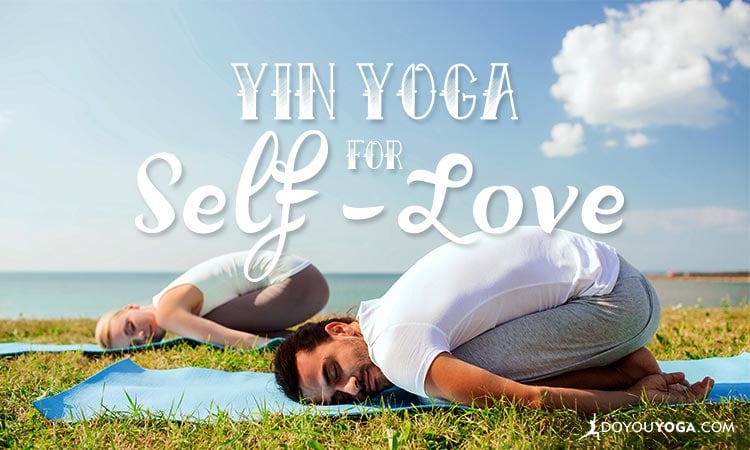When you walk into your yoga studio for your first Yin yoga class, you will find other yogis preparing bolsters, blocks and blankets. There may be soft lights or candles flickering around a dimmed room.
Your teacher will introduce you to the practice and explain to you more about the three underlying principles of Yin. In his popular book “Yin Yoga”, Bernie Clark describes the three principles of Yin yoga as “playing our edges,” “remaining still,” and “holding a pose for time.”
The key to getting the most out of your Yin practice is mastering the art of letting go:letting go of what has come before your class, and of what comes after it. Surrender your mind and body to your breath, allowing your breath to guide you deeper into your practice.
With that stillness you create, the magic and changes begins to work! Here’s what you can expect from a Yin yoga class.
It is not meant to be comfortable.
Your first Yin yoga class will ask that you be open-minded about a practice that will take you WAY beyond your comfort zone.
As Bernie Clark puts it, “much of the benefit of the practice will come from staying in this zone of discomfort, despite the mind’s urgent pleas to leave.”
Yin yoga teaches you how to really listen. You don’t get the opportunity to go in and out, jump around, and find a distracted version of stillness within your practice.
Minutes may feel like hours!
In Yin yoga, you relax in the posture, soften the muscle, and move closer to the bone. While yang-like yoga practices focus on muscle release, Yin offers a much deeper access to the body, focusing instead on the slower releasing fascia (where we hold onto our tension).
Your heart may sink a little when you realize that you will be holding the same poses for three to ten minutes without moving, and you may start to feel fidgety and stuck before you even begin! Being still is not something that many of us who live in the Western world are very good at!
You are practicing in a safe environment.
Yin yoga offers a safe place for your mind and body to produce a meditative and blissful experience, once you open yourself up to what is within.
Your teacher will make engaging comments to keep your mind focused and to stop your body from bolting for the door.They may share the science behind Yin yoga, or discuss the spirituality of the practice. All of this while you are marinating in a deep hip-opener or back bend.
Still, your teacher’s words will become your meditation, and you will likely find comfort and strength from their gentle guidance.Absorb the advice that they share on how to find your edge, how to listen to your body, and how to let go of the monkey mind.
You will discover the Dragon.
You will notice that you are already familiar with poses in the Yin tradition, such as the Swan, the Dragon, the Butterfly, and the Deer. This is deliberate. The Dragon in Yin may look identical to Lizard pose,but in Yin,you relax the muscles and let go of tension.
Nothing is forced in Yin yoga. Everything is a subtle movement. The intention is to reach into the joints and deep tissues around them, as opposed to the more superficial muscles and tissues at a lighter level.
Strong emotions can arise.
Watching my students move within and between poses, I am always amazed by the deep emotive aspect of Yin. When held for several minutes, inoffensive poses can become incredibly challenging, evoking some of the strongest physical and emotional sensations in yoga.
Poses like Dragon and Swan, when held in a Yin practice, are among the deepest hip openers. As we have a tendency to store emotions in our hips, buried feelings and anxieties start stirring when we reach a little bit deeper into our bodies like in these poses.
With Yin yoga,we learn to get intimate with the self– something that can be avoided in a more dynamic yoga practice. Be aware that this can be a normal part of the practice, and know that it means your response to Yin is symbolic of both internal and external personal growth.
What happens after?
While you may feel as though you haven’t physically done very much at the end of Yin class, your body and mind have been working on a much deeper level the whole time, so a lot of work has indeed been done.
It is likely that your hips will have been stretched beyond their usual range, with your mind seemingly nourished and clear at the same time. There will be no denying that you’ll feel as though someone pressed the reset button on your body and mind while you were practicing.


